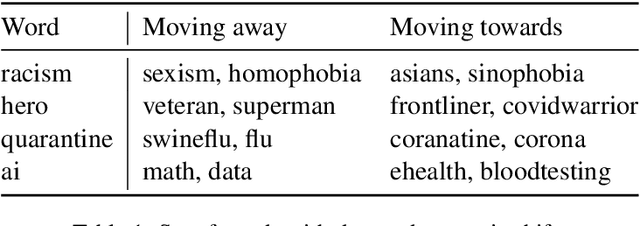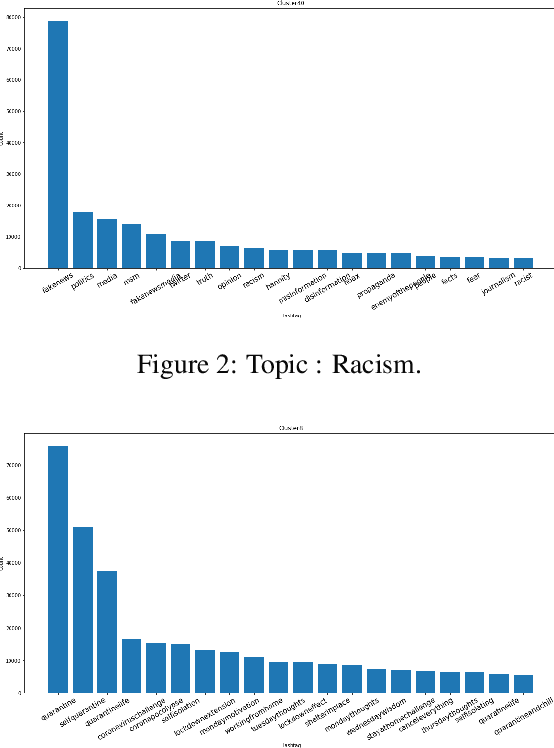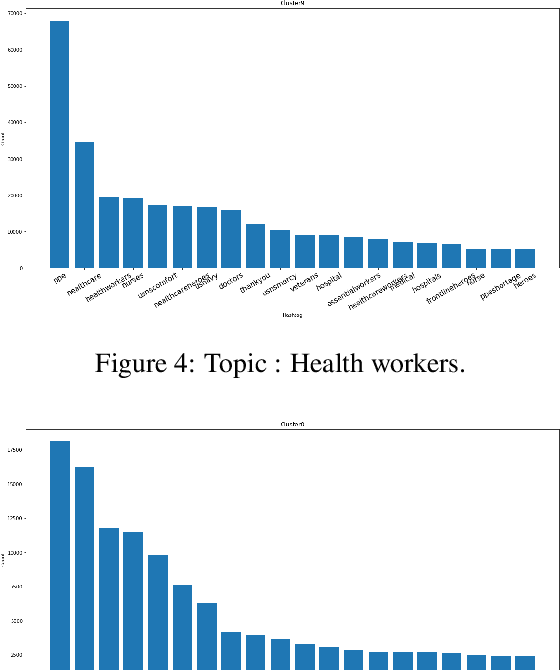How COVID-19 Is Changing Our Language : Detecting Semantic Shift in Twitter Word Embeddings
Paper and Code
Feb 15, 2021



Words are malleable objects, influenced by events that are reflected in written texts. Situated in the global outbreak of COVID-19, our research aims at detecting semantic shifts in social media language triggered by the health crisis. With COVID-19 related big data extracted from Twitter, we train separate word embedding models for different time periods after the outbreak. We employ an alignment-based approach to compare these embeddings with a general-purpose Twitter embedding unrelated to COVID-19. We also compare our trained embeddings among them to observe diachronic evolution. Carrying out case studies on a set of words chosen by topic detection, we verify that our alignment approach is valid. Finally, we quantify the size of global semantic shift by a stability measure based on back-and-forth rotational alignment.
 Add to Chrome
Add to Chrome Add to Firefox
Add to Firefox Add to Edge
Add to Edge